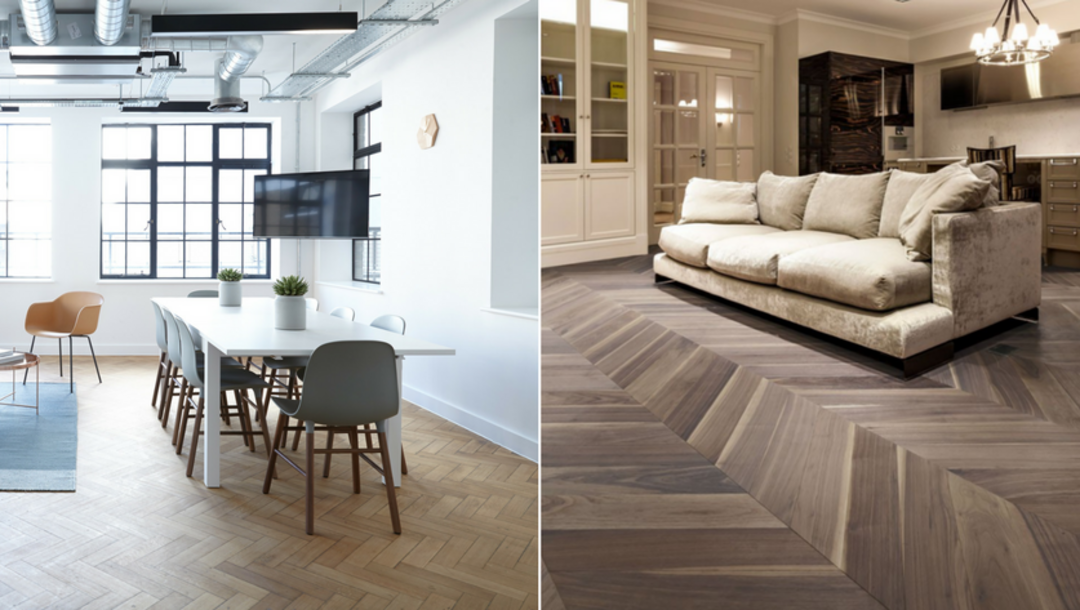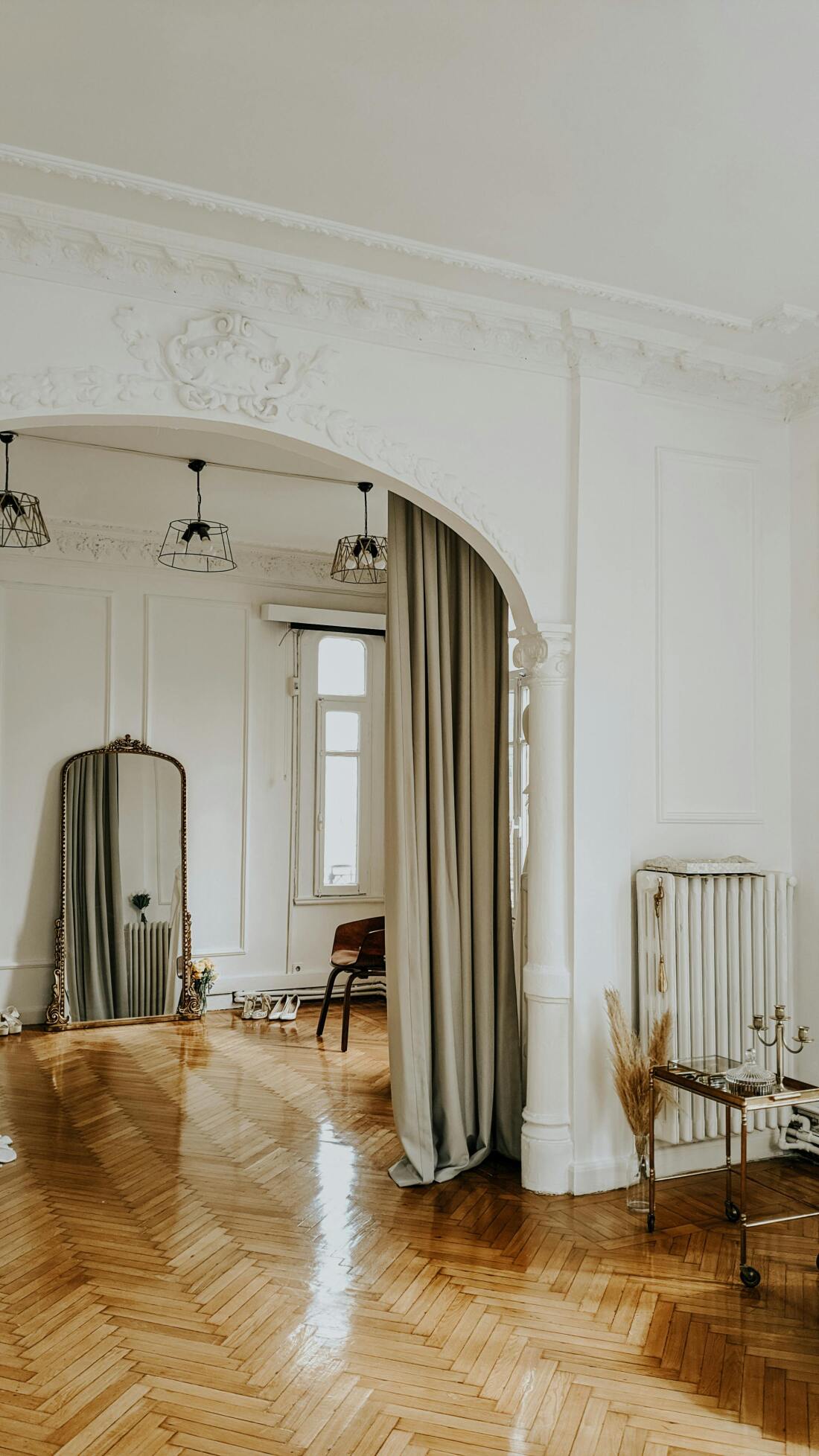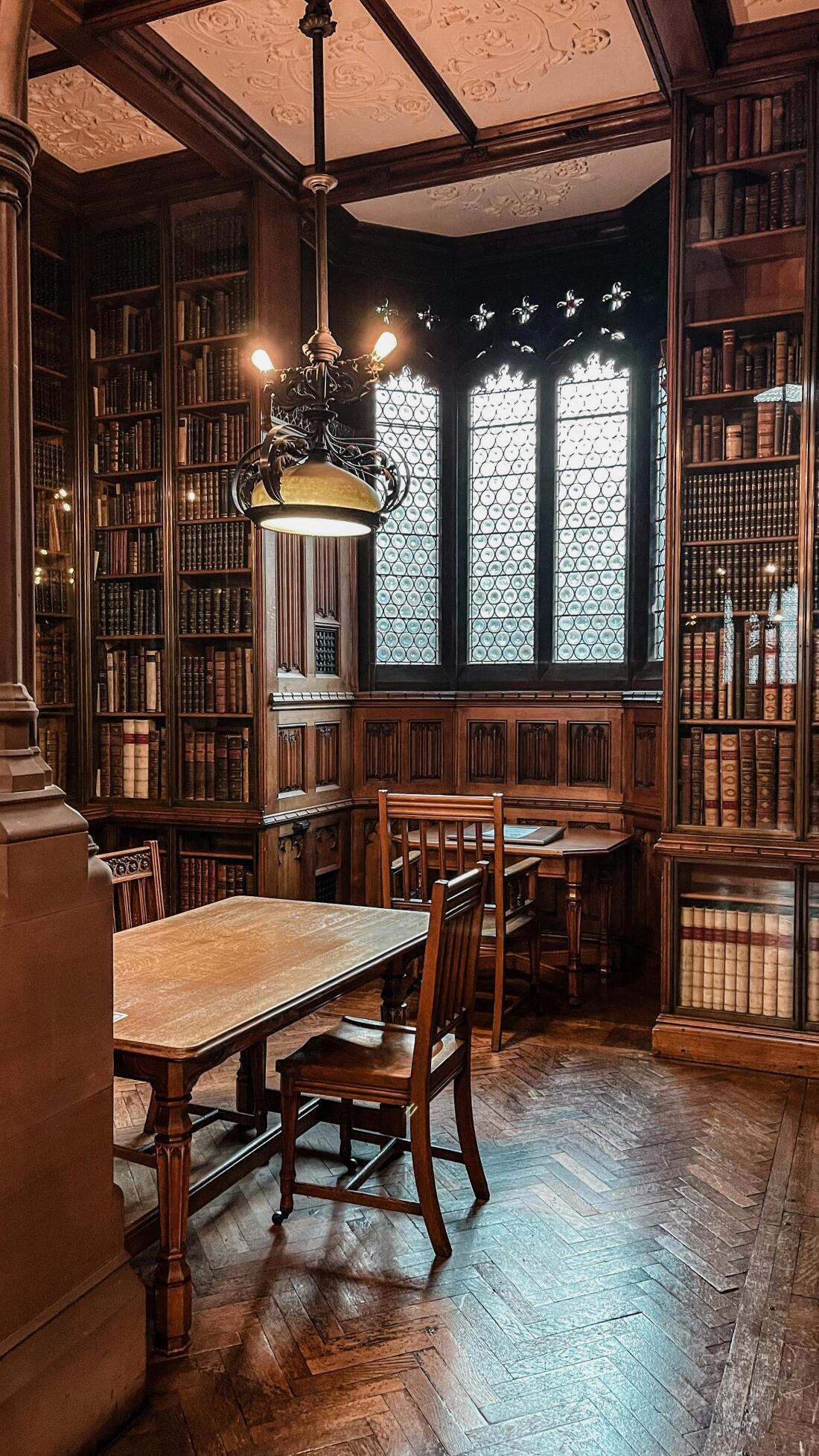
Chevron Parquet VS Herringbone Parquet
February 26, 2024Unveiling the intricate details of parquet flooring can be overwhelming, especially when terms like "chevron" and "herringbone" are thrown around. While both create stunning visual patterns, subtle differences distinguish them. This guide dives into the world of chevron vs. herringbone parquet, providing a clear comparison to help you make an informed decision for your dream space.
Explanation of Chevron Parquet and Herringbone Parquet
Chevron Parquet and Herringbone Parquet are both popular patterns for wood flooring, each offering a distinct look.
Chevron Parquet features a zigzag design, with the wood planks arranged in a V-shape pattern. The planks are cut at 45-degree angles and are laid in a way that forms a continuous zigzag throughout the entire floor. This creates a more uniform and seamless appearance with a modern and sophisticated feel.
On the other hand, the Herringbone floor parquet is also a zigzag pattern, but with the solid wood planks laid at 90-degree angles to form a broken zigzag pattern. This creates a more traditional and classic look, with a sense of depth and texture.
In summary, the key difference between Chevron Parquet and Herringbone Parquet flooring lies in the angles at which the wooden planks are laid—45-degree angles for Chevron and 90-degree angles for Herringbone Parquet flooring. This results in different visual effects and overall aesthetics for the two patterns.
Brief history of parquet flooring
Parquet flooring has a rich history that dates back to ancient Rome, where it was initially used as a form of decorative mosaic. However, its popularization came during the 16th century in Europe, particularly in France, where it became a symbol of luxury and elegance in aristocratic homes and palaces.
Different floor patterns and classic designs, such as herringbone flooring, chevron, and parquet de Versailles, emerged during this time, showcasing the intricate and detailed craftsmanship of this type of flooring. Parquet flooring became synonymous with high-end spaces like hotels, restaurants, and grand ballrooms due to its timeless elegance and durability.
In recent years, there has been a resurgence of interest in parquet flooring, as it has once again become a popular choice for modern interior design. Its classic pattern floor and designs have been adapted to suit contemporary spaces, making it a versatile and stylish option for both residential and commercial settings.
Parquet flooring continues to be a symbol of sophistication and luxury, and its history and designs have firmly secured its place as a timeless element in interior design.
History of Parquet Flooring
Parquet flooring has a rich history dating back to the 16th century in France when it was first introduced as an elegant and intricate flooring option for the wealthy. Over the centuries, parquet flooring has been a symbol of luxury and sophistication, gracing the floors of palaces, mansions, and grand homes around the world. Its timeless appeal and durability have made it a sought-after choice for homeowners and designers alike. Today, parquet flooring continues to be a popular option, with modern variations and designs that blend traditional craftsmanship with a contemporary style of flooring. Understanding the history of parquet wooden flooring provides insight into its enduring allure and the craftsmanship that goes into creating these beautiful and timeless floors.
16th Century Origins
The 16th century saw significant cultural, political, and technological developments that had a lasting impact on the world. It was a time of great change as the Renaissance, which began in the 14th century, continued to flourish, leading to advancements in art, literature, and science. Meanwhile, the political landscape was shaped by the rise of powerful nation-states, such as Spain, England, and France, and the increasing centralization of power.
One of the most impactful events of the 16th century was the Protestant Reformation, ignited by Martin Luther in 1517. This religious movement led to the splintering of the Catholic Church and the rise of Protestantism, fundamentally altering the religious landscape of Europe.
Simultaneously, the Age of Exploration was taking place, with European powers venturing into the New World and Asia in search of new trade routes and resources. This era of exploration and colonization had far-reaching consequences, such as the exchange of goods, ideas, and cultures between the Eastern and Western hemispheres.
In summary, the 16th century was a period of immense change and transformation, marked by cultural, political, and technological developments that shaped the future of the world.
Origin of the parquet flooring in the 16th century
Parquet flooring has its origins in 16th-century France, where it gained popularity among the nobility and upper class. Its intricate patterns and designs were initially seen in the grand palaces and estates of the time. As demand grew, different patterns emerged, including the herringbone wood flooring and chevron patterns, which became prominent throughout Europe during this era.
The herringbone pattern features rectangular pieces of wood laid in a zigzag pattern, while the chevron flooring pattern consists of parallelogram-shaped pieces arranged to form a V shape. These patterns added a sense of elegance and sophistication to the floors of the grand estates and became a symbol of luxury and wealth.
One of the most famous patterns to emerge during this time was the parquet de Versailles, which originated in the Palace of Versailles in France. This pattern featured large wooden floor parquet blocks arranged in a geometric design and became particularly popular among the French nobility. Its intricate and elaborate design became synonymous with the opulence and grandeur of the French royal court.
Overall, parquet flooring and its various distinctive patterns played a significant role in the interior design of the 16th century, providing a luxurious and decorative element to the floors of the elite.
Popular choices in wood planks during this time period
During this time period, there are several popular choices in wood planks for various construction and interior design projects. From hardwoods to softwoods, each type of wood offers unique characteristics and benefits. Whether it's for a new flooring installation, a custom furniture project, or a decorative wall paneling, it's important to consider the popular choices in wood-wide planks to achieve the desired aesthetic and functionality. Let's explore some of the top options for wood planks that are currently trending in the market.
Evolution in the 18th and 19th Centuries
During the 18th and 19th centuries, there were several major developments in evolutionary theory that shaped our understanding of life and its history.
Jean-Baptiste Lamarck proposed a theory of evolution that included the concept of inheritance of acquired traits, which suggested that organisms could pass on characteristics they acquired during their lifetime to their offspring. Georges Cuvier, on the other hand, developed the theory of catastrophism, which proposed that the Earth's history has been marked by a series of natural disasters.
Charles Lyell's theory of uniformitarianism, which proposed that the Earth's surface was shaped by gradual processes over long periods of time, was influential in shaping Charles Darwin's ideas. Darwin's theory of evolution by natural selection, outlined in his book "On the Origin of Species," proposed that species evolve over time through a process of differential survival and reproduction.
These evolutionary theories had a significant impact on both science and society. They challenged traditional religious beliefs about the origin of species and the history of the Earth. They also laid the foundation for modern biology and our understanding of the diversity of life on Earth.
Changes in geometric patterns and designs
Geometric patterns and designs have evolved significantly throughout history, with each era showcasing unique characteristics. In ancient civilizations, such as the Egyptians and Greeks, symmetry and repetition were prominent in their geometric designs, reflecting their emphasis on balance and order. The use of circles, squares, and triangles in religious and architectural contexts was also common.
During the Islamic Golden Age, intricate geometric patterns adorned mosques and artwork, highlighting the cultural influence on design. These designs often featured complex marble tile motifs, star patterns, and interlacing shapes, showcasing a blend of mathematical precision and aesthetic beauty.
The Renaissance period saw a resurgence of interest in classical geometry, incorporating elements of perspective and proportion in art and architecture. Symmetry and harmony were central to designs, such as the use of radial symmetry in embellishments and decorations.
Today, technological advancements have greatly influenced modern geometric designs. The use of digital tools and 3D printing has allowed for more complex and innovative patterns, blurring the straight line between art and technology.
Overall, the evolution of geometric patterns and designs has been shaped by cultural influences and technological advancements, continuing to inspire creativity and innovation in various art forms.

Changes in geometric patterns and designs
Geometric patterns and designs have evolved significantly throughout history, with each era showcasing unique characteristics. In ancient civilizations, such as the Egyptians and Greeks, symmetry and repetition were prominent in their geometric designs, reflecting their emphasis on balance and order. The use of circles, squares, and triangles in religious and architectural contexts was also common.
During the Islamic Golden Age, intricate geometric patterns adorned mosques and artwork, highlighting the cultural influence on design. These designs often featured complex marble tile motifs, star patterns, and interlacing shapes, showcasing a blend of mathematical precision and aesthetic beauty.
The Renaissance period saw a resurgence of interest in classical geometry, incorporating elements of perspective and proportion in art and architecture. Symmetry and harmony were central to designs, such as the use of radial symmetry in embellishments and decorations.
Today, technological advancements have greatly influenced modern geometric designs. The use of digital tools and 3D printing has allowed for more complex and innovative patterns, blurring the straight line between art and technology.
Overall, the evolution of geometric patterns and designs has been shaped by cultural influences and technological advancements, continuing to inspire creativity and innovation in various art forms.
Introduction of herringbone pattern
The herringbone pattern is a classic and timeless design that has been utilized for centuries in various forms. Its origins can be traced back to the Ancient Roman Empire, where it was commonly used in road construction to provide a durable and stable surface. In the 16th century, the herringbone pattern gained popularity in France for parquet flooring, where it was intricately laid out using small real wood pieces to create stunning and elaborate designs.
Throughout history, the herringbone pattern has made its mark in various art forms and architectural structures. It can be found in textiles, such as woven fabric and knitwear, where it adds a sense of sophistication and style. The herringbone pattern has also been incorporated into jewelry, adding a unique and eye-catching element to pieces. In architecture, the herringbone pattern can be seen in brick and masonry work, providing a visually striking and sturdy construction.
The herringbone pattern's historical significance and versatility have cemented its enduring appeal and relevance in design and construction. Its ability to add a touch of elegance and sophistication to any surface or material has made it a timeless classic.
Chevron Parquet Flooring
Chevron parquet flooring is a classic and timeless design that adds elegance and sophistication to any space. The distinctive "V"-shaped pattern creates a sense of movement and depth, making it a popular choice for both traditional and contemporary interiors. This type of flooring is known for its durability and versatility, as it can be installed in various rooms, including living areas, dining rooms, and even hallways. Chevron parquet flooring is also available in a wide range of wood species, finishes, and stains, allowing for customization to suit any style or personal preference. Whether you're looking to add a touch of luxury to your home or create a statement feature, Chevron's beautiful parquet floor is a stylish and practical choice for any interior.
Definition and Characteristics
Next Heading refers to the upcoming major section or topic within a document that categorizes and organizes the content. It serves as a transition point that guides the reader through the document's structure and helps them navigate specific areas of interest. The characteristics of a next heading typically include a bold or larger font size, often accompanied by a number or letter to indicate its position within the document's hierarchy.
Identifying a Next Heading is crucial in understanding the flow of information and locating specific topics within the document. It differs from other headings by indicating the subsequent section of the document, rather than simply introducing a new subtopic. This distinction is important for readers looking to quickly grasp the overall structure and key points of the content.
In summary, the next heading is essential for organizing and presenting content in a clear and coherent manner, facilitating ease of understanding and navigation for the reader. Its definition and characteristics are fundamental to the effective communication of information within the context of the subject matter.
Explanation of chevron pattern
The chevron pattern has a rich history and significant cultural importance. The pattern dates back to ancient pottery, where it was used as a decorative motif. It also appeared in heraldry, representing the military and nobility. The chevron pattern consists of angled planks in a V or arrow shape, creating a striking and dynamic design. This pattern is made by laying wooden or tile planks at an angle to each other, resulting in a visually appealing and geometrically pleasing arrangement.
Throughout history, the chevron pattern has been used in various cultures and time periods. In ancient Greece, it symbolized protection, strength, and stability. In ancient Rome, it was used in military insignia to denote rank. In more recent times, the chevron pattern has been widely used in fashion, interior design, and architecture, with its popularity enduring through the centuries. The chevron pattern continues to be a timeless and iconic design element, evoking a sense of tradition, elegance, and sophistication. Its versatility and historical significance make it a beloved and enduring pattern in various cultural settings around the world.

DEGREE ANGLES USED IN CREATING CHEVRON FLOORS
When it comes to creating chevron floors, the use of degree angles is crucial to achieving a distinctive and visually striking pattern. By carefully measuring and cutting the wood at specific angles, the chevron pattern is able to flow smoothly and seamlessly across the floor, creating a timeless and elegant look. Whether it's for a classic herringbone pattern or a more modern twist, understanding and implementing the correct degree angles is essential for achieving the desired outcome. In this article, we will explore the degree angles used in creating chevron wood floors and how they contribute to the overall design and aesthetic.
KEY DIFFERENCES FROM HERRINGBONE PATTERN
The key differences between the Herringbone and Chevron patterns lie in the cut and installation of the planks. In the Herringbone pattern, rectangular pieces are laid out at 90-degree angles, creating a traditional and heritage effect. On the other hand, the Chevron pattern involves planks cut at a 45-degree angle and fitted together at a point, creating a more modern and geometric feel.
In terms of installation, the Herringbone pattern requires precise cutting and fitting of the planks to create the signature V-shape, while the Chevron pattern also requires precision in cutting the planks at a 45-degree angle and aligning them to form a continuous zig-zag pattern.
Overall, the Herringbone pattern exudes a classic and timeless aesthetic, while the Chevron pattern introduces a more contemporary and visually striking design. Both patterns offer unique visual appeal and can complement different interior styles based on preference for traditional or modern aesthetics.
Distinctive features that set chevron parquet apart
Chevron parquet is known for its distinct "V"-shaped pattern, which sets it apart from traditional parquet flooring. The wood planks are cut at a 45° angle and laid in a way that creates a seamless and uniform design. This unique pattern gives chevron parquet a more modern and dynamic look compared to other parquet patterns.
It's important to note that the main difference between chevron and traditional parquet is the angle at which the wood planks are cut and positioned. While traditional parquet typically features a straight or perpendicular pattern, chevron parquet showcases the "V" shape, creating a more visually striking effect.
Additionally, it's worth mentioning the difference between chevron and herringbone patterns. Although they may appear similar at first glance, the key difference lies in the angle at which the wood planks are cut and laid. Chevron features a continuous zigzag pattern at a 45° angle, while herringbone creates a staggered pattern at a 90° angle. These distinctions make chevron parquet a standout choice for those seeking a unique and contemporary flooring option.
Explore diverse parquet options & find inspiration for your dream floor now!
Download our free guide & uncover the secrets of Chevron & Herringbone Parquet!
- Visit our website today!
- Click here and discover your perfect floor today!





